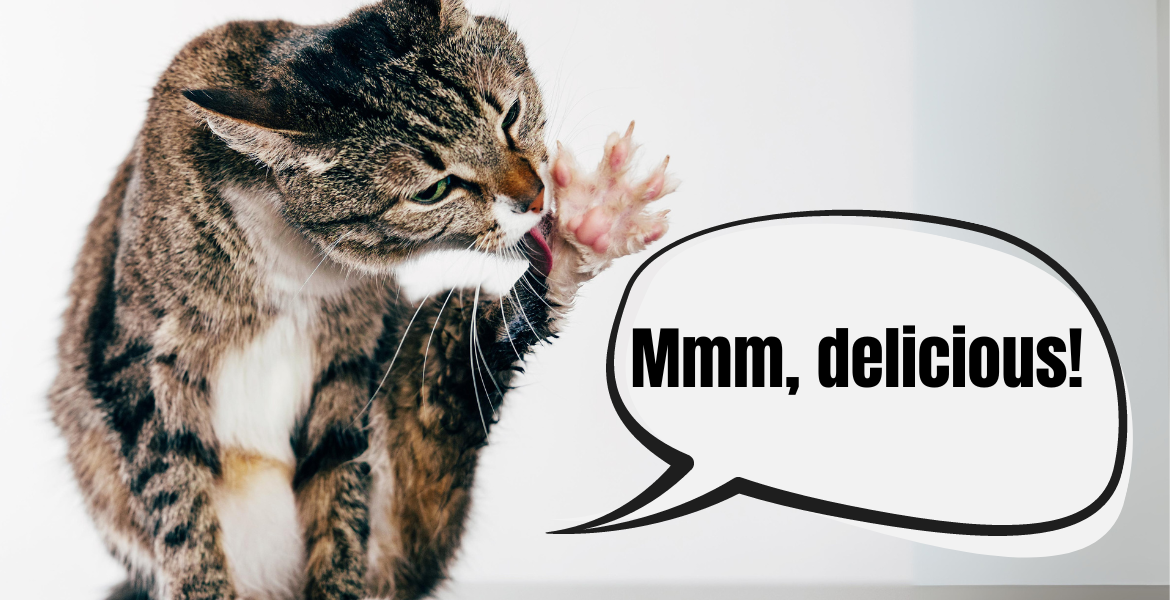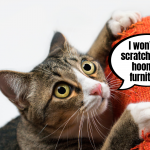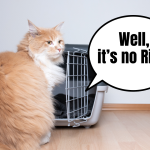Have you ever caught your cat chewing on their claws and thought: Seriously, cat? Really? Don’t worry – every fabCat has been through this. It turns out that in the feline world, this habit is completely normal behavior. After all, our furry friends are masters of personal hygiene. Let’s check together, fabCat, whether claw-chewing is okay and how we, as Caretakers, should take care of our pets’ paws.
Why Do Cats Chew Their Claws?
Remember the famous line from the movie Shrek: “Onions have layers, ogres have layers”? Cat claws have layers too! These layers protect the inner core filled with blood vessels and nerves. Moreover, cat claws never stop growing – just like human nails. The difference is that a cat’s claw consists of several keratin layers. While the outer layer wears down through walking, scratching, and daily activities, a new, sharp claw grows underneath it. When it’s ready, the cat sheds the outer layer, and voilà – the paw is ready for action again.
What does this look like in practice? Sometimes a claw is shed accidentally during play, training on the scratching post, or even just walking. It might also happen because of an accident (like getting caught in a blanket), or through chewing. This exchange of claw layers is entirely natural and painless – as long as the claw doesn’t break near the inner, sensitive core.
Fun fact: Not all of a cat’s claws grow at the same rate, so you’ll regularly find old keratin shells on your floor, couch, and scratching posts.
Is It Safe for a Cat to Chew Their Claws?
Absolutely! Cats are neat freaks – we don’t need to convince any fabCat of that – so they keep their claws in good order too. Chewing helps remove old layers and clean the paws after a visit to the litter box, a stroll through your balcony planters, or some digging in the garden. For us humans, chewing nails is an unhygienic and unhealthy habit, but for our furry friends, we say: chew away, kitty!
Are there any situations where this behavior might be a cause for concern? Like any feline habit, of course. There are some cases where claw-chewing might be a bad sign:
- When your cat does it more frequently or intensely than usual. This could suggest something is wrong – maybe your cat has a broken claw, or an old layer is digging into the paw pads. Check it out, fabCat.
- When you notice wounds around the claws. These could be a sign of skin conditions that are causing discomfort, and your cat may be chewing the claws to relieve pain.
- When your cat chews their claws out of stress. Yes, fabCat – it’s possible! If your cat shows signs of behavioral problems, is constantly hiding, or seems withdrawn, and you’ve ruled out health issues with a vet, consult a behaviorist. Excessive claw-chewing can be a sign of boredom or deeper stress, which can negatively affect your cat’s health.
To Trim or Not to Trim: The FabCat Dilemma
We’ve touched on this topic a few times on our blog, but before we direct you to our previous articles, here’s a quick summary. If your kitties are strictly indoor cats, don’t go outside, and climb only on scratching posts, trimming their claws is definitely something to consider. Razor-sharp claws aren’t essential in a domestic environment and can even pose a danger to the cat and other household members. By regularly trimming the sharpest tips, you’ll not only protect yourself from accidental scratches but also prevent situations where your cat gets stuck on the couch, can’t free themself, and ends up damaging their entire claw in the process. Regular claw trims also extend the life of your scratching posts and furniture, especially if your furry friend likes to scratch them from time to time. It’s one of those hygiene routines worth getting cats used to from a young age.
You can read more about how to trim your cat’s claws and survive the process on our blog: https://blog.mykotty.pl/en/2024/02/05/the-fabcat-claw-code-how-to-trim-cat-claws-and-come-out-unscathed/
Scratching Posts and Cat Claw Health
Let’s quickly jump to the topic of scratching posts and their role in keeping a cat’s claws in top condition. After all, that’s what scratching posts are for! By scratching, cats mark their territory, stretch, and release their emotions. When a claw layer is ready to shed, scratching helps remove it. It’s a myth that scratching wears down a cat’s claws. Quite the opposite – it helps the fresh, sharp claw come out faster 

Have you ever caught your furry friends chewing their claws? And a second question: do your cats eagerly use your manicure services? Let us know in the comments, fabCats!




